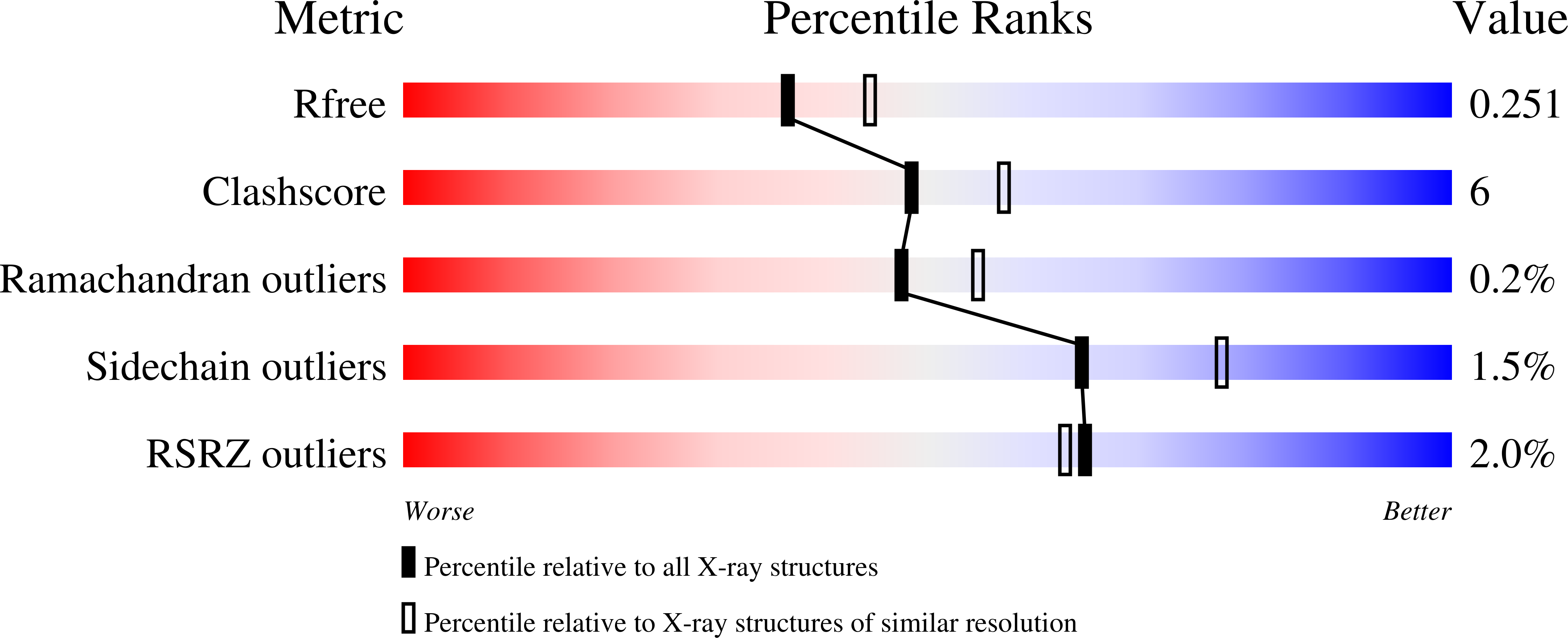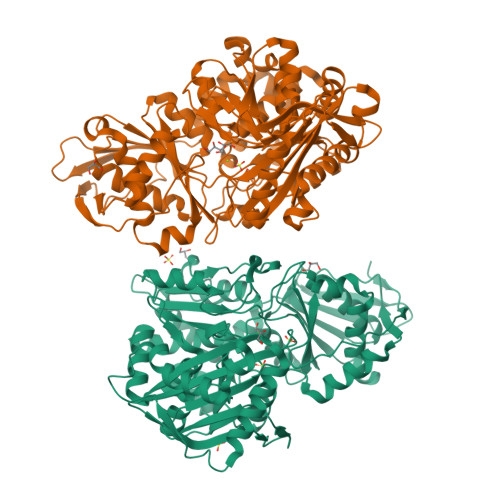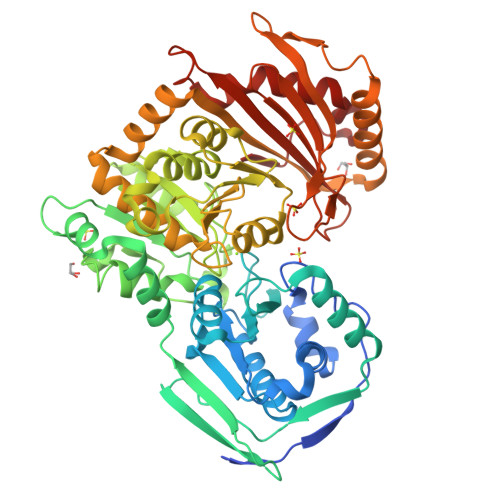A Hotspot for Disease-Associated Variants of Human PGM1 Is Associated with Impaired Ligand Binding and Loop Dynamics.
Stiers, K.M., Beamer, L.J.(2018) Structure 26: 1337
- PubMed: 30122451
- DOI: https://doi.org/10.1016/j.str.2018.07.005
- Primary Citation of Related Structures:
5VBI, 5VEC, 5VG7, 5VIN, 6UIQ - PubMed Abstract:
Human phosphoglucomutase 1 (PGM1) plays a central role in cellular glucose homeostasis, catalyzing the conversion of glucose 1-phosphate and glucose 6-phosphate. Recently, missense variants of this enzyme were identified as causing an inborn error of metabolism, PGM1 deficiency, with features of a glycogen storage disease and a congenital disorder of glycosylation. Previous studies of selected PGM1 variants have revealed various mechanisms for enzyme dysfunction, including regions of structural disorder and side-chain rearrangements within the active site. Here, we examine variants within a substrate-binding loop in domain 4 (D4) of PGM1 that cause extreme impairment of activity. Biochemical, structural, and computational studies demonstrate multiple detrimental impacts resulting from these variants, including loss of conserved ligand-binding interactions and reduced mobility of the D4 loop, due to perturbation of its conformational ensemble. These potentially synergistic effects make this conserved ligand-binding loop a hotspot for disease-related variants in PGM1 and related enzymes.
Organizational Affiliation:
Biochemistry Department, University of Missouri, 117 Schweitzer Hall, Columbia, MO 65211, USA.






















